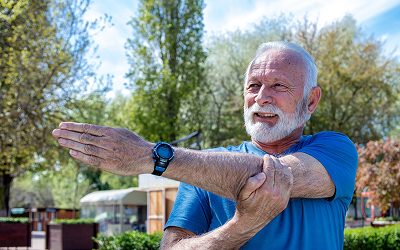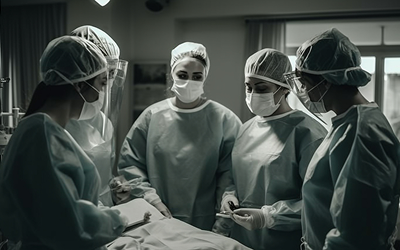We've all had those moments, gazing out a window, dreaming of fantastical abilities – flight, underwater breathing. While we may not possess superpowers, nature has provided us....
Read MoreEmbracing Graceful Aging: The Role of UC-MSCs

As we navigate the journey of aging, maintaining vitality and well-being becomes paramount. At Happy Valley, we’re exploring innovative approaches to support healthy physical aging, complementing traditional lifestyle strategies.
While a balanced diet, regular exercise, and mental stimulation are essential, emerging research suggests that umbilical cord mesenchymal stem cell (UC-MSC) therapy may offer a complementary approach to enhancing the body’s natural regenerative capabilities.
Understanding the Aging Process:
Aging involves complex molecular, cellular, and systemic changes:
- Molecular Changes: DNA alterations, reduced cellular energy, and protein buildup.
- Cellular Changes: Decreased cell division, stem cell availability, and intercellular
communication. - Systemic Changes: Altered nutrient sensing and utilization.
These changes contribute to age-related challenges like reduced tissue repair, chronic
diseases, and metabolic disorders.
The Regenerative Potential of UC-MSCs:
UC-MSCs, with their ability to differentiate into various cell types and self-renew, offer a promising avenue for promoting healthy aging.
Why UC-MSCs?
- They can differentiate into bone, cartilage, and fat cells.
- They multiply rapidly.
- They possess immunomodulatory properties.
- They have a low risk of triggering immune responses.
- They are easily collected.
UC-MSCs and Healthy Physical Aging:
Research indicates that UC-MSCs can:
- Combat Aging Frailty: Reduce inflammation, enhance muscle function, and improve physical performance.
- Mitigate Cognitive Decline: Enhance learning, memory, and synaptic plasticity, and reduce Alzheimer’s-related protein production.
Support Immune Function: Revitalize the thymus and enhance immune cell production.
Happy Valley's Approach:
At Happy Valley, we believe in empowering individuals to embrace graceful aging. UC-MSC therapy offers a unique opportunity to enhance the body’s natural regenerative processes, promoting vitality and well-being.
By harnessing the regenerative potential of UC-MSCs, we aim to provide innovative,
personalized therapies that support healthy aging and enhance quality of life.
Works Cited:
- Guo, J., Huang, X., Dou, L. Mingjing, Y., Shen, T.(2022) Aging and aging-related diseases: from molecular mechanisms to interventions and treatments. Sig Transduct Target Ther 7, 391 . https://doi.org/10.1038/s41392-022-01251-0
- Li, Z., Hu, X., & Zhong, J. F. (2019). Mesenchymal Stem Cells: Characteristics, Function, and Application. Stem cells international, 2019, 8106818.https://doi.org/10.1155/2019/8106818
- Nishimura, T., Yamaguchi, S., Yoshimura, K., Rubinstein, P., & Takahashi, T. A. (2011). Isolation and characterization of mesenchymal stem cells from human umbilical cord blood: reevaluation of critical factors for successful isolation and high ability to proliferate and differentiate to chondrocytes as compared to mesenchymal stem cells from bone marrow and adipose tissue. Journal of cellular biochemistry, 112(4), 1206–1218. https://doi.org/10.1002/jcb.23042
- Nagamura-Inoue, T., & He, H. (2014). Umbilical cord-derived mesenchymal stem cells: Their advantages and potential clinical utility. World journal of stem cells, 6(2), 195–202.https://doi.org/10.4252/wjsc.v6.i2.195
- Schulman, I. H., Balkan, W., & Hare, J. M. (2018). Mesenchymal stem cell therapy for aging frailty. Frontiers in Nutrition, 5, 108. https://doi.org/10.3389/fnut.2018.00108
- Wang, C., Zhao, B., Zhai, J. et al. (2023) Clinical-grade human umbilical cord-derived mesenchymal stem cells improved skeletal muscle dysfunction in age-associated sarcopenia mice. Cell Death Dis 14, 321. https://doi.org/10.1038/s41419-023-05843-8
- Piao, L., Huang, Z., Inoue, A., Kuzuya, M., & Cheng, X. W. (2022). Human umbilical cord-derived mesenchymal stromal cells ameliorate aging-associated skeletal muscle atrophy and dysfunction by modulating apoptosis and mitochondrial damage in SAMP10 mice. Stem cell research & therapy, 13(1), 226. https://doi.org/10.1186/s13287-022-02895-z
- Cao, N., Liao, T., Liu, J., Fan, Z., Zeng, Q., Zhou, J., Pei, H., Xi, J., He, L., Chen, L., Nan, X., Jia, Y., Yue, W., & Pei, X. (2017). Clinical-grade human umbilical cord-derived mesenchymal stem cells reverse cognitive aging via improving synaptic plasticity and endogenous neurogenesis. Cell death & disease, 8(8), e2996. https://doi.org/10.1038/cddis.2017.316
- Hyun Ju Lee, Jong Kil Lee, Hyun Lee, Janet E. Carter, Jong Wook Chang, Wonil Oh, Yoon Sun Yang, Jun-Gyo Suh, Byoung-Hee Lee, Hee Kyung Jin, Jae-sung Bae. (2012). Human umbilical cord blood-derived mesenchymal stem cells improve neuropathology and cognitive impairment in an Alzheimer’s disease mouse model through modulation of neuroinflammation. Neurobiology of Aging. 33,3:588-602. https://doi.org/10.1016/j.neurobiolaging.2010.03.024.
- Yeo, G. E. C., Ng, M. H., Nordin, F. B., & Law, J. X. (2021). Potential of mesenchymal stem cells in the rejuvenation of the aging immune system. International journal of molecular sciences, 22(11), 5749. https://doi.org/10.3390/ijms22115749
- Pan, X. H., Lin, Q. K., Yao, X., Li, Z. A., Cai, X. M., Pang, R. Q., & Ruan, G. P. (2020). Umbilical cord mesenchymal stem cells protect thymus structure and function in aged C57 mice by downregulating aging-related genes and upregulating autophagy- and anti-oxidative stress-related genes. Aging, 12(17), 16899–16920. https://doi.org/10.18632/aging.103594
You Might Also Like
The many benefits of MSCs on bone flaws and cartilage damage
It’s just a fact of life that as you get older, pains start to creep up in places they didn’t used to be. Joints begin to ache from just a little use, and getting up from your favorite chair, or...
Read MoreEmbracing Graceful Aging: The Role of UC-MSCs
As we navigate the journey of aging, maintaining vitality and well-being becomes paramount. At Happy Valley, we're exploring innovative approaches to support healthy physical aging.....
Read MoreRevolutionizing Autoimmune Treatment: Targeting Peyer’s Patches with UC-MSCs and Exosomes
Autoimmune diseases, where the body's immune system mistakenly attacks healthy tissues, present a significant challenge. At Happy Valley, we're exploring cutting-edge regenerative medicine approaches to address these conditions....
Read MoreBeyond Organ Transplants: The Transformative Potential of UC-MSC Transplantation
While organ transplantation has revolutionized medicine, a less familiar yet equally powerful approach is stem cell transplantation. At Happy Valley, we're exploring the vast potential of this therapy to address a wide range of medical conditions....
Read More




